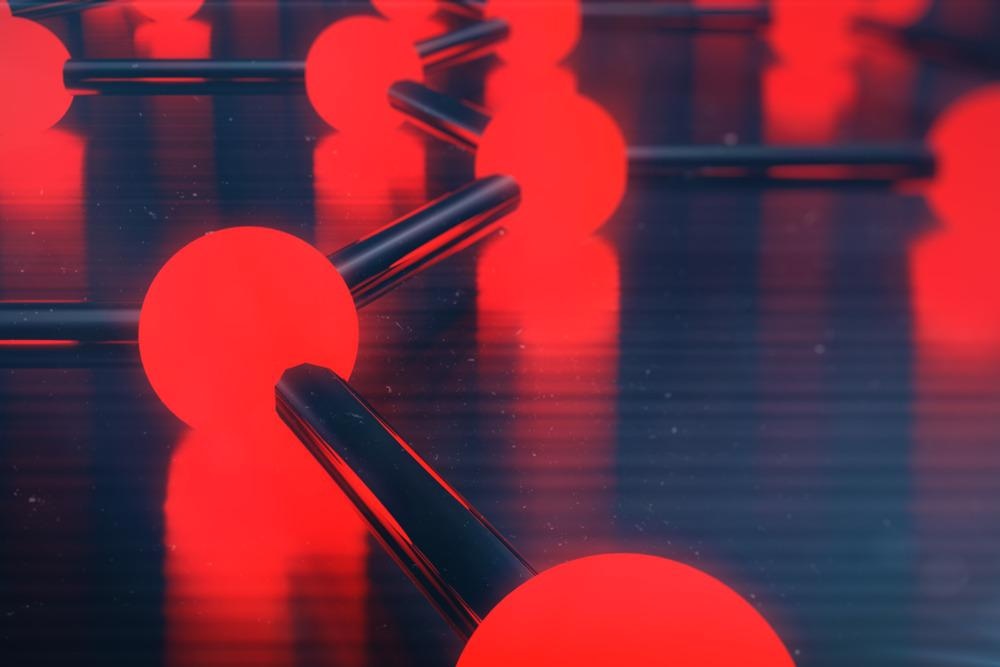Thermogravimetric analysis (TGA) has been established as a simple and credible analytical technique for characterizing commercially produced graphene powders. In this article, we focus on the use of TGA to analyze graphene and other related materials.

Image Credit: Rost9/Shutterstock.com
The Fight Against Fake Graphene
Graphene has been referred to as the 21st-century "wonder" material due to its unique properties, two-dimensional structure and broad applications. However, one of the significant barriers to the growth of this industry is the production and distribution of high-quality graphene.
A recently published quality assessment survey has revealed that a significant fraction of commercially produced graphene on the market is not a single or few-layer graphene sheet as claimed.
Instead, these nanomaterials are a mix of graphitic and other nano-carbonaceous particles or impurities from the manufacturing process with characteristics different from graphene. In the long run, this will harm the graphene marketplace, affecting the rest of the distribution chain.
Advanced Characterization of Graphene Structures
Graphene standardization has become one of the most important criteria for the rapidly expanding graphene materials sector. The majority of advanced characterization techniques, such as TEM, AFM, SEM, and Raman spectroscopy, are localized characterization methods that can only investigate the characteristics of graphene over a limited region.
As a result, there is a considerable demand for developing and implementing reliable, straightforward, and low-cost analytic tools that provide consistent data on the bulk properties of graphene structures with precision.
Thermogravimetric Analysis (TGA): A Reliable Analytical Method
Thermogravimetric analysis (TGA) is a method most extensively used for thermal analysis. It is based on measuring material's mass loss as a function of temperature, producing a TGA curve.
In graphene research, thermogravimetric analysis has been established as an intriguing thermal analysis tool for determining impurities in graphene materials, such as graphene oxide and graphite. TGA curves show a typical mass loss as a function of temperature, and their corresponding first derivative (DTG) graph shows mass loss rate versus temperature.
A TGA curve of graphene and related graphene structures show distinct peaks with the temperature of maximum mass decomposition rates (Tmax) in specific ranges. This indicates how different their chemical, structural, and thermal properties, such as thermal stability, are. Qualitative and quantitative analysis are then possible.
TGA Analysis to Detect Fake Graphene Materials
Scientists have shown the potential of TGA for differentiating graphene oxide (GO), reduced graphene oxide (r-GO), few-layer graphene (FLG), and graphite (Gft). These materials are typically subjected to thermal decomposition in the air atmosphere up to 1000 °C for TGA studies.
Thermogravimetric analysis is useful for detecting the existence of graphitic impurities in graphene by analyzing (Tmax), a key thermal parameter.
It is observed that the Tmax values obtained from the TGA-DTG carbon combustion peaks of these materials increase from graphene oxide (530–620 °C) to reduce graphene oxide (520–620 °C ) to few-layer graphene (680–730 °C), followed by graphite (800–890 °C).
As GO contains a high concentration of oxygen groups, it requires less energy to decompose. FLG has a higher Tmax because breaking down the sp2 hybridized carbon atoms in a hexagonal carbon framework requires more heat energy.
Graphite is one of the most stable carbon materials because it has the strongest 3D carbon network; hence it demands even more heat energy.
Qualitative and Quantitative Analysis of FLG
In general, when Tmax values shift from the confirmed few-layer graphene (680–730 °C) to lower values, it can be used as a sign of increasing defectiveness, namely the presence of GO or rGO and sp3-hybridized carbon.
The shift of the Tmax to higher values indicates the number of layers is getting closer to typical graphite powder. As a result, it will be helpful to qualitatively evaluate whether a powder consists of few-layer graphene, defective materials such as rGO and GO or graphite particles (>10 layers).
Thermogravimetric analysis can be used to quantitatively predict the existence of non-graphene carbon materials in FLG powder. For example, in a powder containing a mixture of FLG and graphite, the DTG graphs revealed that the associated graphite peak appeared alongside the FLG peak, with the intensity and peak area of the former increasing as graphite concentration increased.
The Future of Thermogravimetric Analysis (TGA) and Graphene
Thermogravimetric analysis is a simple screening tool for determining the qualitative composition of bulk graphene materials and their impurities like graphite and graphene oxide particles.
A substantial difference in the Tmax value can be noted between graphene and its key impurities (graphene oxide and graphite), a key parameter for identifying these impurities in commercial graphene materials.
Thermogravimetric analysis (TGA) analysis has the potential to be used as a reliable and simple technique to check the quality of manufactured graphene and find out the differences between few-layer graphene and "fake graphene" on an industrial scale, which has previously been neglected.
References and Further Reading
Farivar, F., Lay Yap, P., Karunagaran, R. and Losic, D., (2021) Thermogravimetric Analysis (TGA) of Graphene Materials: Effect of Particle Size of Graphene, Graphene Oxide and Graphite on Thermal Parameters. C, 7(2), p.41. https://www.mdpi.com/2311-5629/7/2/41
Farivar, F., Yap, P., Hassan, K., Tung, T., Tran, D., Pollard, A. and Losic, D., (2021) Unlocking thermogravimetric analysis (TGA) in the fight against “Fake graphene” materials. Carbon, 179, pp.505-513. https://www.sciencedirect.com/science/article/pii/S0008622321004474
Disclaimer: The views expressed here are those of the author expressed in their private capacity and do not necessarily represent the views of AZoM.com Limited T/A AZoNetwork the owner and operator of this website. This disclaimer forms part of the Terms and conditions of use of this website.